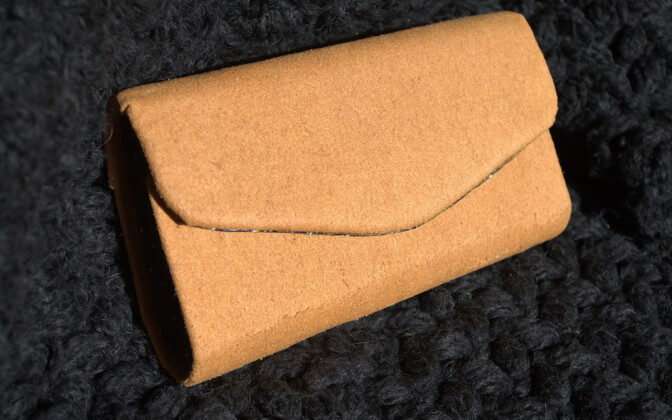The Estonian company Gelatex Technologies produces an ecotextile from gelatine that is similar to leather, but a nature-friendly substitute to animal skin and imitation leather.
The Founder and Chief Technology Officer of Gelatex, Märt-Erik Martens, explained that about two kilograms of toxic chemicals are needed to produce one square metre of imitation leather, which often find their way into the oceans and seriously pollute the environment. Gelatex, on the other hand, does not use chemicals in their production processes. Gelatine is made from animal bones, tendons or skin.
Martens added that Gelatex ecotextile is in essence biodegradable, but the petroleum-based imitation leather does not degrade in nature. According to Martens, the sustainable effect of the company will become apparent if they manage to work together with mass-production fashion brands like H&M and Zara in the future.
Martens said that the advantage of leather-like ecotextile compared to animal skin, is its price. He also pointed out that the price of chrome-tanned leather costs an average of €40 per square metre, but a Gelatex product costs €20 per square metre.
Martens added that the company has involved research fellows from the Institute of Chemistry and the Institute of Physics at the University of Tartu in the development operations, and the plan is to launch the product at the beginning of 2020. Martens said that the final project for improving the surface texture of the material is underway.
According to the company’s CEO, Mari-Ann Meigo, the development has cost about €90,000. Meigo added that the company plans to market the product initially in northern and central Europe.
An Estonian bag designer, Kadri Kruus, is helping with the development of the ecotextile. According to Kruus, as ecotextile can be produced in a roll, it will be easier and more useful for designers to make cuts from it, because only a limited amount of leather surface can be used with real leather. Kruus also likes the characteristic and sweet smell of the material, and its brownish colour. However, Kruus pointed out that the textile crumbles when processed and that it is hard to make proper products out of it, but the company will probably be able to eliminate this deficiency.
According to Kruus, there might still be consumers who would not use products made of ecotextile as it is still of animal origin. At the same time, Kruus believes that textile produced by Gelatex is a better solution for nature than plastic imitation leather.
A research fellow in material science at the University of Tartu, Martin Järvekülg, has been following the entire process and he said that Gelatex has been very effective with their work so far. The advantage of ecotextile compared to other leather-like products, according to Järvekülg, is the eco-friendly production process, but this could also cause some problems. Järvekülg agrees with Kruus, that there are people who do not consider raw materials of animal origin to be sustainable.
The translation of this article from Estonian Public Broadcasting science news portal Novaator was funded by the European Regional Development Fund through Estonian Research Council.
 Back
Back



